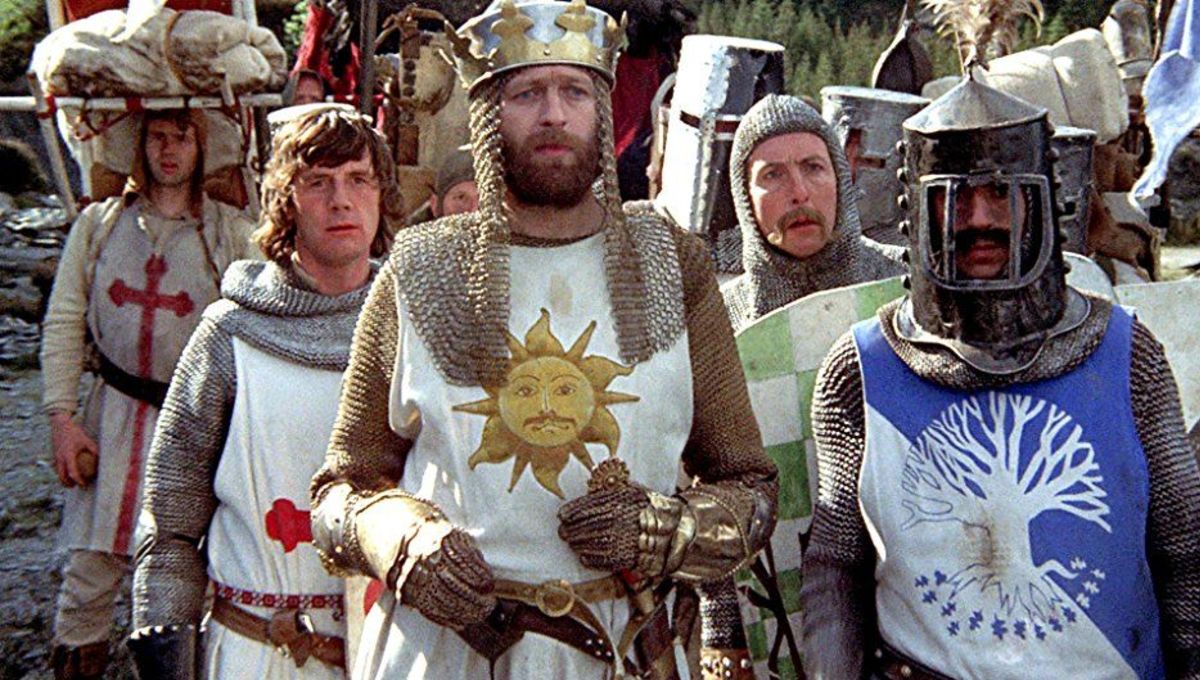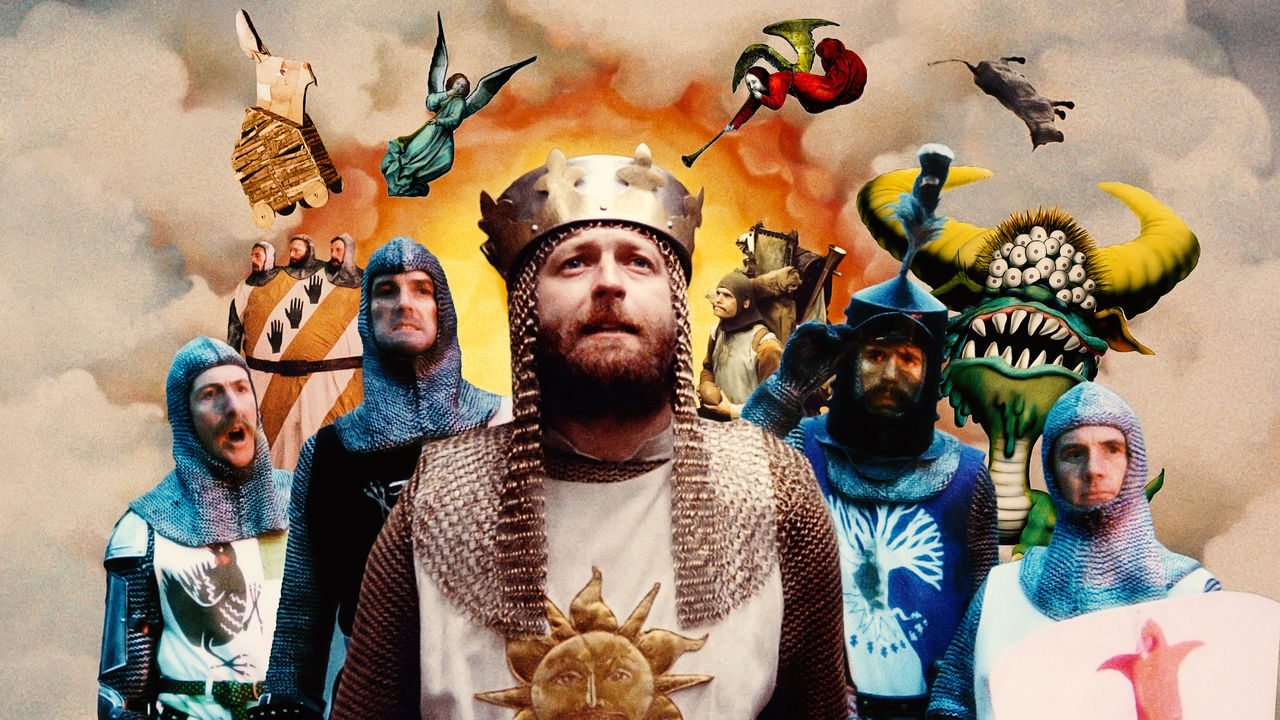Moving Pictures: An Introduction to Cinema companies shots, scenes, and sequences to letters, words, and sentences. A single shot is a letter to a scene’s word in a bigger sequence or sentence. The book constantly talks about how the skill of making a film is similar to a language, called cinematic language. Moving Pictures brings to the front the importance of the juxtaposition of shots. Monty Python and the Holy Grail use this Juxtaposition to great effect. There are multiple instances where one shot follows King Arthur and his knights and the next shot shows a pair of 1975 British police investigating an earlier scene as a crime scene committed by King Arthur. Neither of these scenes is unified by space, time, or even genre. Monty Python has many shots that can stand alone as scenes. If I had to pick one, the stop motion animation god is essentially a single shot and acts as a scene alone.
Monty Python and the holy grail is a hard movie to use as an example of good dramatic structure, as it breaks those rules on a consistent basis. The protagonist is King Arthur, he is the most promote character, the first character seen in the film, and the “plot” has him as the most important character. However, the movie doesn’t really have a core antagonist. And because of this, the movie doesn’t follow the common “three-act structure”. When critics write about this movie in reference to the elements of a dramatic structure, it’s always in how the movie successfully breaks those structures for comedic effect. The film famously doesn’t have a resolution. It has a climax, with all of the people King Arthur gained favor in, rushing towards the camera, but that climax is anti-climatic removed as the previously stated 1975 British police arrest King Arthur. The police then place their hand on the camera, ending the movie. The movie ends with what it was doing the entire time, subverting expectations, confusing the time period, and a laugh
“Here’s the recipe for a good story: 1 protagonist. 1 goal. A whole bunch of obstacles. That’s it. Pretty much every story ever told can be boiled down to those three elements: A protagonist pursuing a goal confronted by obstacles. Cinematic storytelling draws from this same narrative source, and in that sense, is not so different from a good novel or even just a good yarn spun around the campfire.” (Sharman 100) Monty Python and the Holy Grail follow this simple recipe. 1 protagonist, King Arthur, 1 Goal, find the Holy Grail, and A whole bunch of obstacles, with each obstacle being hilarious and subverting expectations. The story in Monty Python is purposefully messy, the time period is never consistent, which adds to its surrealist comedy. The plot is supposed to push a story, but the story isn’t the main point of Monty Python. I wouldn’t hesitate to say that Monty Python’s story is its comedy with the plot supporting that.





